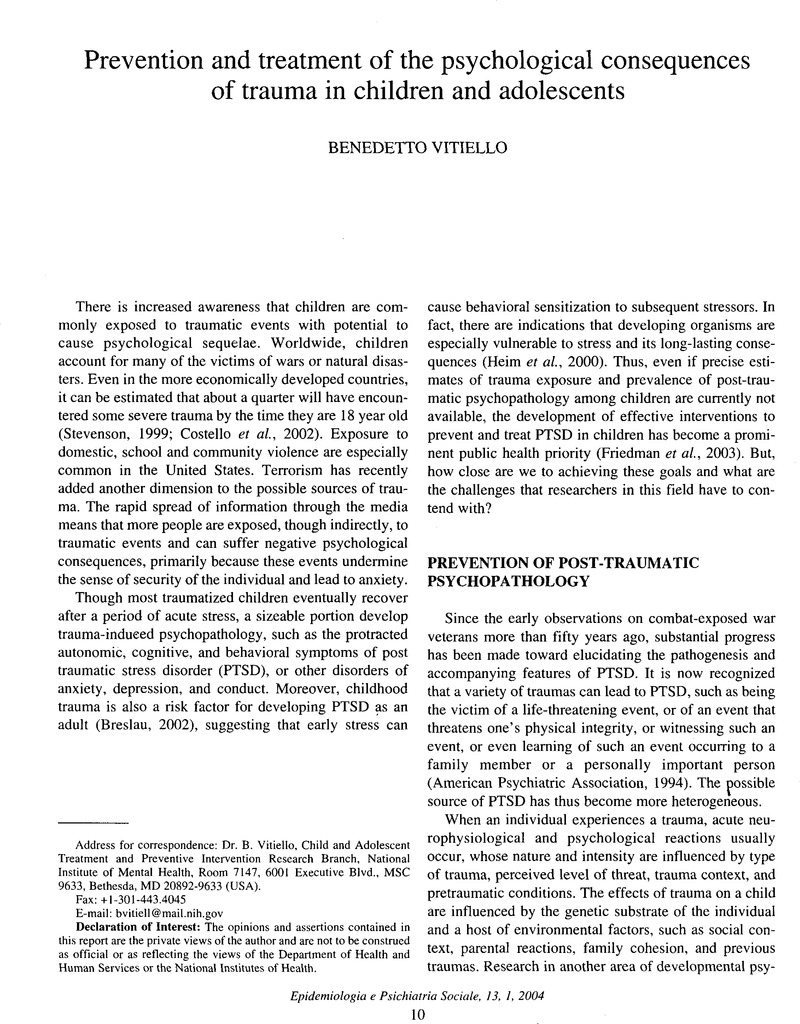Crossref Citations
This article has been cited by the following publications. This list is generated based on data provided by Crossref.
Kearney, Christopher A.
Wechsler, Adrianna
Kaur, Harpreet
and
Lemos-Miller, Amie
2010.
Posttraumatic Stress Disorder in Maltreated Youth: A Review of Contemporary Research and Thought.
Clinical Child and Family Psychology Review,
Vol. 13,
Issue. 1,
p.
46.
Spröber, Nina
Schneider, Thekla
Rassenhofer, Miriam
Seitz, Alexander
Liebhardt, Hubert
König, Lilith
and
Fegert, Jörg M
2014.
Child sexual abuse in religiously affiliated and secular institutions: a retrospective descriptive analysis of data provided by victims in a government-sponsored reappraisal program in Germany.
BMC Public Health,
Vol. 14,
Issue. 1,
Park, Eun Jin
Lee, Mi-Sun
Bae, Seung Min
Kim, Hyun Soo
Hong, Minha
Kim, Eunji
Lee, Seul Ki
Kim, Jiyoun
and
Bhang, Soo-Young
2024.
Promising Effect of the Children in Disaster: Evaluation and Recovery Intervention on Trauma Symptoms and Quality of Life for Children and Adolescents: A Controlled Study.
Psychiatry Investigation,
Vol. 21,
Issue. 2,
p.
123.





